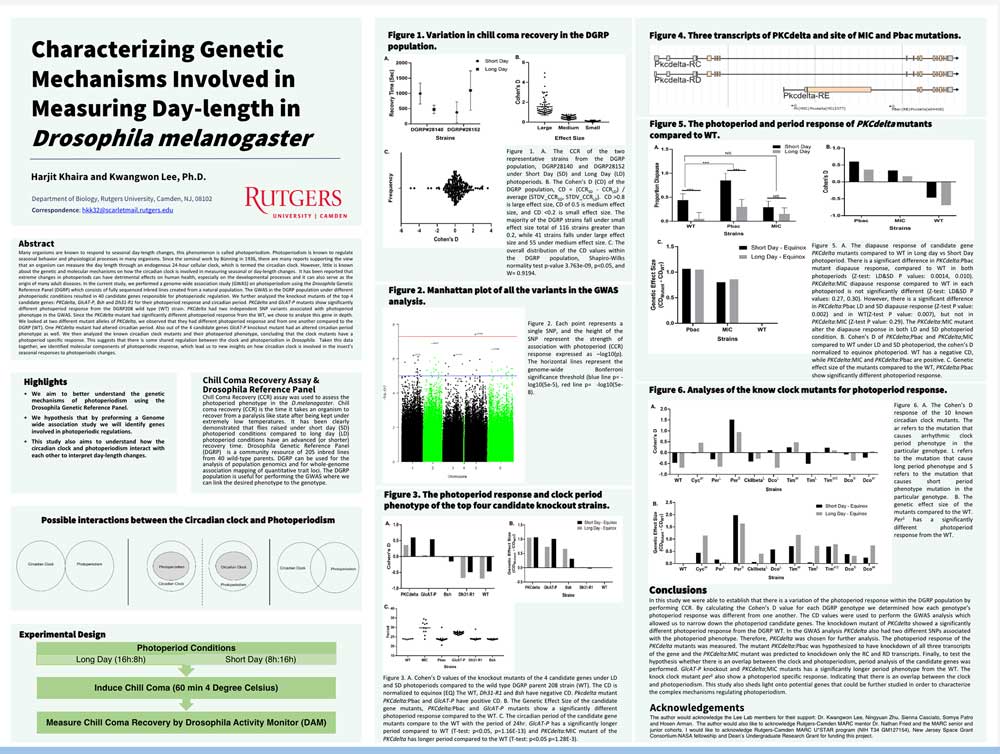Harjit Khaira ‘21
Major: Biology
Affiliations: Honors College, MARC Fellow
Faculty Mentor: Dr. Kwangwon Lee, Associate Professor of Biology
Abstract
Many organisms are known to respond to seasonal day-length changes, this phenomenon is called photoperiodism. Photoperiodism is known to regulate seasonal behavior and physiological processes in many organisms. Since the seminal work by Bünning in 1936, there are many reports supporting the view that an organism can measure the day length through an endogenous 24-hour cellular clock, which is termed the circadian clock. However, little is known about the genetic and molecular mechanisms on how the circadian clock is involved in measuring seasonal or day-length changes. It has been reported that extreme changes in photoperiods can have detrimental effects on human health, especially on the developmental processes and it can also serve as the origin of many adult diseases. In the current study, we will perform a genome-wide association (GWA) study on photoperiodism using the Drosophila melanogaster Genetic reference panel (DGRP) which consists of fully sequenced inbred lines created from a natural population. The overall goal is to, identify genes that are involved in measuring photoperiodism which would provide a novel insight into how an organism measures the day-length changes. We have hypothesized that the GWA study in the DGRP population under different photoperiodic conditions will result in candidate genes responsible for photoperiodic regulation. In order to perform the GWA study, first, we need to collect phenotype data. The phenotype chosen for our study was chill coma recovery (CCR), which is the time it takes an organism to wake up from a paralysis like state when kept under low temperatures. CCR is induced by keeping the organisms in 4- degree Celsius for 60 minutes after being exposed to different photoperiodic conditions. Then, we tested whether the recovery time was effected by the photoperiodic conditions by performing Cohen’s D analysis. Our results indicated that there was a significant positive and negative effect on CCR. After, the CCR data used for the association study which indicated potential genes responsible for the recovery time and photoperiodism. Some of them associate with circadian rhythm genes. Our study will reveal the role of the circadian clock in photoperiodism.

